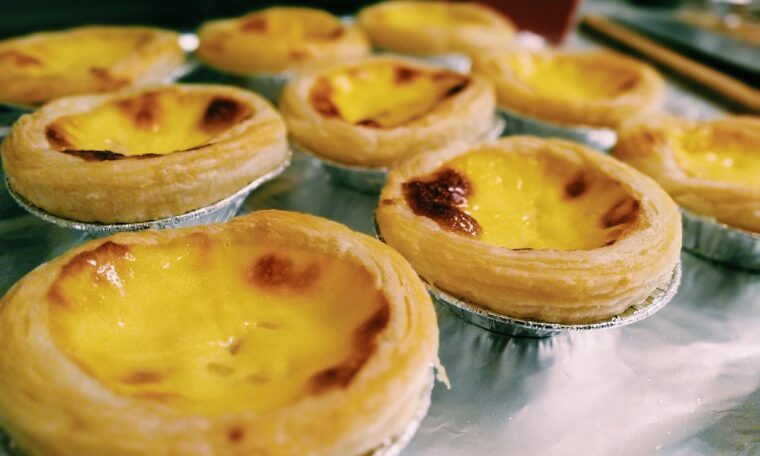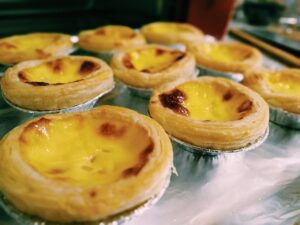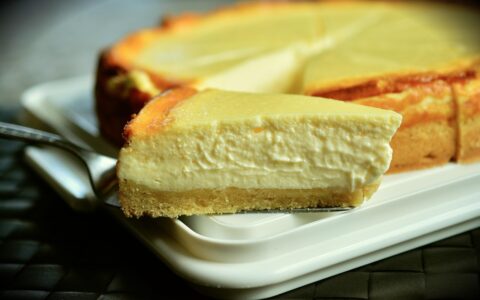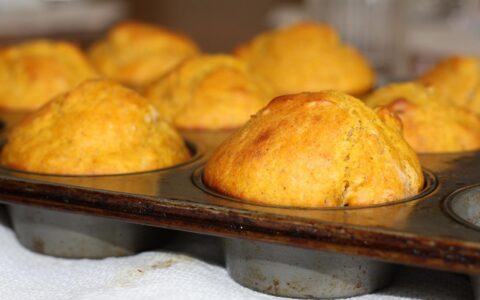
Win Your Next Pageant
Thank you for reading this post, don't forget to subscribe!Get Pageant Questions Written By A Miss Universe Judge

Chinese Egg Tarts: A Sweet Legacy of East-Meets-West Pastry
Few pastries capture the essence of culinary cultural exchange as beautifully as Chinese egg tarts (dan tat). With their impossibly flaky, buttery crusts and silky, jiggly custard centers, these beloved treats are a testament to the fusion of European baking techniques with Chinese flavors. Originating in the tea cafes (cha chaan teng) of 1920s Hong Kong, egg tarts have since become icons of Cantonese cuisine, equally at home in dim sum palaces and neighborhood bakeries.
More than just a dessert, these golden treasures represent a delicious chapter in food history—where Portuguese pastéis de nata met Chinese ingenuity to create something entirely new. The contrast of textures alone is mesmerizing: shattering layers of laminated pastry give way to a trembling, egg-rich filling that’s subtly sweet with a whisper of vanilla. Whether enjoyed as an afternoon snack with milk tea or as the grand finale to a banquet, Chinese egg tarts are a study in balance, tradition, and technique.
A Pastry Born of Global Trade
The egg tart’s journey spans continents and centuries:
Portuguese Roots
- 15th Century: Portuguese monks in Belém developed pastéis de nata using egg yolks leftover from wine clarification.
- 16th Century: Macau’s colonization introduced these tarts to Southern China.
Cantonese Adaptation
- 1920s: Hong Kong bakeries replaced puff pastry with a shortcrust or cookie-like shell for easier mass production.
- 1940s: The cha chaan teng (tea cafe) culture cemented egg tarts as a staple of yum cha (tea time).
Modern Variations
- Hong Kong Style: Flaky puff pastry with a smoother custard.
- Macanese Style: Caramelized tops with cinnamon notes (closer to the original Portuguese).
- Guangzhou Style: Cookie crust with a firmer, eggier filling.
The Science Behind the Perfect Tart
What makes Chinese egg tarts so uniquely addictive?
1. Crust Alchemy
- Laminated vs. Shortcrust: Hong Kong versions use layered pastry for crispness; Guangzhou prefers a tender, crumbly base.
- Butter vs. Lard: Traditional recipes use lard for flakiness, while modern ones often blend butter for flavor.
2. Custard Perfection
- Egg-to-Milk Ratio: 1:2 creates a delicate, quivering texture.
- Straining: Ensures glass-smooth filling without bubbles.
- Low Baking Temp: Prevents curdling or puffing.
3. The Maillard Effect
- Blistered Spots: The custard’s sugars caramelize at 350°F (175°C), creating signature flavor.
Chinese Egg Tarts Recipe
Flaky, layered shells with trembling vanilla custard—just like Hong Kong bakeries!
Prep Time: 1 hour (+ 30 mins chilling)
Cook Time: 25 mins
Yield: 12 tarts
Equipment Needed (Amazon Deals, Buy Now, Click On Link Below)
- Stand Mixer
- Food Processor
- Electric Mixer
- 12-cup Muffin Tin (or tart molds)
- Rolling Pin
- Pastry Brush
- Fine-Mesh Sieve
- Mixing Bowls (2)
- Whisk
- Cookie Cutter (3-inch/7.5cm)
_______________________________________________________________________________
Ingredients
For the Crust:
- 1½ cups (190g) all-purpose flour
- ¼ tsp salt
- ½ cup (115g) cold unsalted butter, cubed
- 3-4 tbsp ice water
For the Custard:
- ¾ cup (180ml) hot water
- ⅓ cup (65g) granulated sugar
- 3 large eggs
- ½ cup (120ml) evaporated milk
- 1 tsp vanilla extract
Step-by-Step Instructions
1. Make the Crust
- Pulse flour, salt, and butter until crumbly.
- Add water 1 tbsp at a time until dough forms.
- Roll into a log; chill 30 mins. Slice into 12 discs; press into muffin tin.
2. Prepare Custard
- Dissolve sugar in hot water; cool slightly.
- Whisk in eggs, evaporated milk, and vanilla. Strain twice.
3. Bake
- Preheat oven to 350°F (175°C).
- Fill shells 80% with custard. Bake 20-25 mins until edges are golden and centers jiggle slightly.
- Cool in tin 10 mins, then transfer to a rack.
Pro Tips
✔ Laminated Crust Option: Fold dough like puff pastry for extra flakiness.
✔ Smooth Custard: Strain mixture thoroughly to remove bubbles.
✔ Storage: Best fresh; reheat briefly to revive crispness.
Troubleshooting
- Soggy Bottoms? Pre-bake crusts 5 mins before filling.
- Cracked Custard? Overbaked—reduce time or lower oven temp.
Serve warm for the ultimate experience!
Why Egg Tarts Captivate
- Textural Contrast: Crisp shell vs. silky custard.
- Cultural Bridge: A edible symbol of Macau’s Portuguese-Chinese heritage.
- Nostalgia: For many, they taste like childhood visits to bakeries.
Ready to Bake? This recipe honors tradition while simplifying the process for home bakers.
Fun Fact: The world’s largest egg tart weighed 651 lbs (295 kg) in Macau! Will yours be next? 🎉 ownthatcrown.com



 Subscribe to Our RSS Feed
Subscribe to Our RSS Feed



